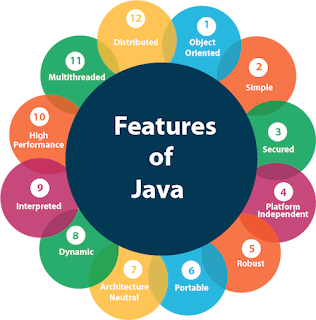Unveiling the Potential of Graph Neural Networks in Data Science
I. Introduction
Exploring the Power of Graph Neural Networks in Data Science
In this article, we delve into the fascinating world of Graph Neural Networks (GNNs) and their significant role in data science. With their unique architecture and capabilities, GNNs have emerged as a powerful tool for analyzing complex data structures represented as graphs. This article aims to shed light on the potential of GNNs and their diverse applications across various domains.
II. Understanding Graphs and Graph Neural Networks
Grasping the Fundamentals: Graphs and Their Role in Data Science
Before diving into the specifics of GNNs, let's begin by understanding the basics of graphs and their representation in data science. Graphs are mathematical structures composed of nodes and edges, where nodes represent entities or objects, and edges denote relationships or connections between them. In data science, graphs provide a powerful framework for modeling and analyzing complex relationships in various systems.
Introducing Graph Neural Networks: Revolutionizing Data Science
Graph Neural Networks, or GNNs, are a class of neural networks specifically designed to operate on graph-structured data. Unlike traditional neural networks, which primarily focus on tabular or sequential data, GNNs excel at capturing intricate relationships and dependencies present in graph data. By leveraging the structural information encoded in graphs, GNNs enable us to extract valuable insights and make accurate predictions.
III. Applications of Graph Neural Networks
A. Social Network Analysis
Unraveling Social Dynamics: GNNs for Social Network Analysis
In the realm of social network analysis, GNNs have gained significant attention for their ability to uncover underlying patterns and dynamics. By utilizing GNNs, we can better understand social interactions, identify influential individuals, and analyze community structures within networks. GNNs offer a comprehensive approach to studying the complexities of social relationships and their implications in various domains.
B. Recommendation Systems
Personalized Recommendations Redefined: GNNs in Recommendation Systems
In the era of personalized experiences, GNNs have revolutionized recommendation systems by incorporating graph information. By leveraging the power of GNNs, recommendation algorithms can consider not only user-item interactions but also the underlying graph structure, enabling more accurate and context-aware recommendations. Several notable case studies demonstrate the efficacy of GNNs in enhancing recommendation systems across different industries.
C. Drug Discovery and Molecular Graphs
Accelerating Drug Discovery: GNNs for Molecular Graph Analysis
GNNs have emerged as a game-changer in the field of drug discovery and molecular graph analysis. By utilizing GNNs, researchers can predict chemical properties, identify potential drug candidates, and accelerate the drug discovery process. Cutting-edge research and advancements in this field are continually pushing the boundaries of what GNNs can achieve in the realm of pharmaceutical research.
D. Knowledge Graphs and Question Answering
Unlocking Knowledge: GNNs in Knowledge Graphs and Question Answering
Knowledge graphs provide a structured representation of information, and GNNs offer a powerful approach to model and analyze knowledge graphs. By employing GNNs, we can enhance knowledge representation, facilitate question answering, and enable semantic search capabilities. Promising developments in this field indicate exciting directions for GNN research and its applications in knowledge-driven systems.
IV. GNN Models and Techniques
A. Graph Convolutional Networks (GCNs)
Unleashing the Power of GCNs: Graph Convolutional Networks
Graph Convolutional Networks (GCNs) are a fundamental class of GNNs that have contributed significantly to graph analysis. GCNs operate by aggregating and propagating information across neighboring nodes, enabling effective node-level and graph-level predictions. Architectural variations and extensions of GCNs further enhance their capabilities, making them a versatile tool for various graph-related tasks.
B. Graph Attention Networks (GATs)
Attention at its Core: Graph Attention Networks
Graph Attention Networks (GATs) utilize the attention mechanism to focus on relevant nodes during information propagation. By assigning attention weights to neighboring nodes, GATs prioritize important features and relationships, leading to improved performance in graph analysis tasks. The flexibility and interpretability of GATs make them well-suited for various applications and use cases.
C. Graph Generative Models
Unleashing Creativity: Generating Graphs with GNNs
Graph Generative Models combine the power of GNNs and generative models to create new graphs with desired properties. Variational Graph Autoencoders (VGAEs) and GraphRNNs are two notable examples of graph generative models that have shown promising results. The ability to generate graphs opens up exciting possibilities across domains such as chemistry, social networks, and recommendation systems.
V. Challenges and Future Directions
Overcoming Challenges: The Path Ahead for GNN Research and Applications
While GNNs have shown immense potential, several challenges persist in their research and implementation. Addressing issues such as scalability, interpretability, and handling noisy or incomplete graph data remains crucial. Furthermore, advancements in GNN explainability, robustness, and model compression are needed to ensure their widespread adoption. The future of GNNs lies in exploring novel techniques, addressing limitations, and unlocking their full potential across various domains.
VI. Conclusion
Harnessing the Power of GNNs: A Promising Future for Data Science
In conclusion, Graph Neural Networks (GNNs) have emerged as a revolutionary approach in data science, offering unprecedented capabilities in analyzing graph-structured data. From social network analysis to recommendation systems, drug discovery, and knowledge graphs, GNNs have showcased their versatility and potential across various domains. As research and advancements continue to unfold, GNNs hold the key to unlocking deeper insights and driving innovation in data-driven decision making.
VII. Frequently Asked Questions (FAQs)
- What are Graph Neural Networks (GNNs) and how do they differ from traditional neural networks?
- How are GNNs applied in social network analysis and recommendation systems?
- What are the challenges in implementing GNNs in drug discovery and molecular graph analysis?
- What are some popular GNN architectures, such as Graph Convolutional Networks (GCNs) and Graph Attention Networks (GATs)?
- What are the future directions and potential applications of GNNs in data science?
For more details,
Visit us - www.izeoninnovative.com
Mail us - bavyaizeon@gmail.com
Call at - 8637675438



Comments
Post a Comment